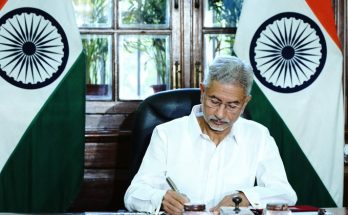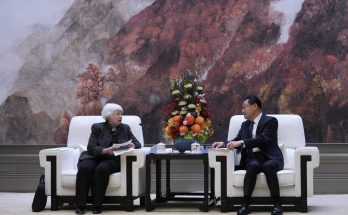
The tensions around the South China Sea are rising by the day. China’s recent actions have fuelled these tensions, threatening stability and security as well as safety and freedom of navigation and aviation in the South China Sea.
In view of claims and counter-claims, it’s time to set the record straight, and not muddy the waters by falsified projection of the situation.
The historical fact is that Paracel and Spratly archipelagoes belong to Vietnam. They have been owned and controlled peacefully and continuously by Vietnam at least since the 17th century when the islands were not claimed by any other states. Vietnam has sufficient legal foundation and historical evidence to affirm its sovereignty, sovereign right and jurisdiction over the Paracels Islands and the Spratly Islands in the East Sea, in accordance with international law, including UNCLOS 1982.
Where is evidence?
China, in fact, has no evidence to vindicate their claim of sovereignty over Paracel and Spratly. The so-called “historical and jurisprudential evidences” cited by Chinese officials are totally misleading. What can be found in all the maps printed by China before 1947 was that China’s territory stopped short at Hainan Island only. If China has evidence, then why did it use force to occupy the Paracel Islands of Vietnam in 1974 and some islands in Spratly of Vietnam in 1988? China must understand that the occupation of a territory by force is unlawful, according to international law. If China has evidence, why is it so afraid of going to international court of arbitration? If China has evidence, why it is afraid of multilateral talks with all claimants in South China Sea, but insists on bilateral talks to “divide and rule” the claimants?
Big Design: Altering Status Quo
Without evidence to prove its sovereignty, China has accelerated its plan for monopolised occupation of South China Sea since 2009 by imposing a large sea area within a nine-dot lines or U-shape as its “historic waters” which cover 80% of South China Sea and overlap in a large scale with the Economic Exclusive Zone of Brunei, Indonesia, Malaysia, the Philippines and Vietnam. Since 2013, large-scale land reclamation and construction of the artificial islands have been speeded up in the South China Sea by China along with the construction of military facilities on these artificial islands.
The scale of China’s land reclamation and construction of the artificial islands is unprecedented. Just only in the past barely two years, nearly 3000 acres of land have been reclaimed by China, more than all the land reclaimed by all others combined in the entire history of the region. The point is that the land reclamation by China has been carved from what were open stretches of the East Sea and an area is a busy shipping route connecting the Pacific and Indian Ocean.
And China is the only one that turned the reefs, which are under water at high tide into permanent artificial islands. China’s artificial lands, therefore, could not be recognised by international law. The aim of China’s land reclamation and construction of artificial islands is to gradually change territorial status quo in the region, then create the means for their statements of sovereignty to bolster their vague claim of “nine-dash line”, that’s drawn on maps without detailed coordinates and never officially recognised by any country or international body. After land reclamation, China offered “countries alongside the South China Sea and vessels sailing through the waters navigation service but it is not difficult to understand that the trick to unintendedly take de facto recognition of China illegal artificial islands thus an acceptance of the “fait accompli” recognition of China’s sovereignty for their “nine-dash line” claim.
China has recently conducted many other illegal and dangerous activities that violated the sovereignty of Vietnam and other countries in Southeast Asia. In May 2014, China placed Haiyang Shiyou-981 oil-rig inside Vietnam’s Exclusive Economic Zone and continental shelf. China has just again moved the oil-rig HD 981 into an area in the Gulf of Tonkin where Vietnam and China are negotiating the demarcation of their sea border. China also constructed new lighthouses and built big airfields on artificial islands. Early this year, China began conducting flights to the airfield it had illegally built at Fiery Cross Reef of Spratly Archipelago. Conducting unannounced flights in Ho Chi Minh FIR to illegal built airfield on Fiery Cross Reef in Vietnam’s Truong Sa (Spratly) archipelago, China not only infringed Vietnam’s sovereignty but also violated the International Civil Aviation Organization (ICAO)’s regulations and seriously imperiled aviation safety in the region. China’s flights interfered with the air traffic service (ATS) routs L625, N892 (flight levels from FL135 to FL460) and rout M771 (flight levels from FL250 to FL460), from the reporting point FONA to ALDAS. The ICAO requires all airplanes to report their positions when they fly to such points. The Chinese planes crossed many different routes without any notice about their flights or any contact with the flight operating agency. These activities of China obviously and seriously imperiled aviation safety in the region. More than that, building a helicopter base on Duncan Island, deploying HQ-9 long-range surface-to-air missiles on Woody island of Vietnam’s Paracel Archipelago, China is acting contrary to what Chinese leaders have promised to the world community and takes very serious steps to militarize the South China Sea.
How can the above said acts of China to reclaim land, build artificial islands to change the status-quo and militarize them be considered as normal? How can the violation by China of the sovereignty and rights of Vietnam and other Southeast Asian nations be a normal activity? How can you believe that the Chinese installation of weapons in the South China Sea will not threaten the regional peace and stability as well as security, safety and freedom of navigation and aviation in the South China Sea?
In short, there is a big gap between the words and deeds of China concerning South China Sea. That’s why so many questions are raised in India and elsewhere about China’s activities in South China Sea. In the end, it’s important not only to do right things, but also to be seen be doing the right things. It is probably necessary for China to learn from India on how it settled the maritime disputes with Bangladesh in the sea of Bengal by using the UN’s Arbitration Tribunal.
(Tran Quang Tuyen is Minister (Press) at the Embassy of the Socialist Republic of Vietnam in India. The views expressed in this article are solely those of the author.)
Author Profile
- India Writes Network (www.indiawrites.org) is an emerging think tank and a media-publishing company focused on international affairs & the India Story. Centre for Global India Insights is the research arm of India Writes Network. To subscribe to India and the World, write to editor@indiawrites.org. A venture of TGII Media Private Limited, a leading media, publishing and consultancy company, IWN has carved a niche for balanced and exhaustive reporting and analysis of international affairs. Eminent personalities, politicians, diplomats, authors, strategy gurus and news-makers have contributed to India Writes Network, as also “India and the World,” a magazine focused on global affairs.
Latest entries
 In ConversationJuly 26, 2024India-Italy defence collaboration can extend to third countries: Anil Wadhwa
In ConversationJuly 26, 2024India-Italy defence collaboration can extend to third countries: Anil Wadhwa In ConversationJuly 23, 2024Italy views India as a key partner in Indo-Pacific: Vani Rao
In ConversationJuly 23, 2024Italy views India as a key partner in Indo-Pacific: Vani Rao DiplomacyJune 29, 2024First BRICS unveils a roadmap for boosting tourism among emerging economies
DiplomacyJune 29, 2024First BRICS unveils a roadmap for boosting tourism among emerging economies India and the WorldJune 11, 2024On Day 1, Jaishankar focuses on resolving standoff with China
India and the WorldJune 11, 2024On Day 1, Jaishankar focuses on resolving standoff with China






